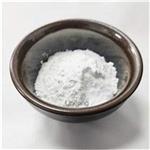Distinct classes
Three classes of SOD have evolved with distinct protein folds and different catalytic metal ions: Cu, ZnSODs, MnSOD/FeSODs, and NiSODs:
1. Cu, ZnSOD (also known as SOD1 and SOD3 in humans) occurs in eukaryotes and some prokaryotes, and point mutations in human Cu, ZnSOD are linked to the fatal neurodegenerative disease amyotrophic lateral sclerosis (ALS, also known as Lou Gehrig’s disease).
2. FeSOD and MnSOD (also referred to as SOD2 in humans) appear to have evolved from a common ancestral gene, with the FeSOD gene observed in primitive eukaryotes, the plastids of plants, and bacteria. Phylogenetic analysis of MnSOD indicates that it occurs in all the major domains of life, in the mitochondria of eukaryotes, and in the cytoplasm of many bacteria. FeSOD and MnSOD have diverged significantly from each other so that the two metals cannot functionally substitute for each other in Mn/FeSODs from most species.
3. The more recently discovered NiSOD has been found only in bacteria.
Common to all three classes of SOD is the disproportionation reaction, occurring through alternate oxidation and reduction of their catalytic metal ions, and rather remarkably, SOD catalysis takes place at rates close to diffusion limits. Although the protein architectures of the three SOD classes are distinct, all crucially provide electrostatic guidance for the superoxide substrate and alter the metal ion redox potential to a range suitable for superoxide disproportionation. These structures also provide for a suitable proton source and may control enzymatic activity through product inhibition[3].
Description
Superoxide dismutase is widely present in the human body, including the skin and its appendages.
Uses
Superoxide dismutase from bovine erythrocytes has been used in a study to assess a kinetic model of radiation-induced inactivation of superoxide dismutase in nitrous oxide-saturated solutions.It also catalyzes the dismutation of superoxide radicals to hydrogen peroxide and molecular oxygen. Plays a critical role in the defense of cells against the toxic effects of oxygen radicals. Competes with nitric oxide (NO) for superoxide anion (which reacts with NO to form peroxynitrite), thereby SOD promotes the activity of NO.Superoxide dismutase(SOD) has also been shown to suppress apoptosis in cultured rat ovarian follicles, neural cell lines, and transgenic mice.superoxide dismutase (polyoxyalkylene-modified) is used in cosmetic preparations to prevent drying and aging of the skin without causing irritation.
Uses
Superoxide dismutase is used as an excellent therapeutic agent to combat reactive oxygen species-mediated diseases such as cancer, inflammatory diseases, cystic fibrosis, ischemia, aging, rheumatoid arthritis, neurodegenerative diseases, and diabetes. However, the enzyme has some limitations in clinical applications. Therefore, SOD conjugates and mimetics have been developed to improve its therapeutic efficiency.
Definition
Any of a type of antioxidant metalloenzymes that occur in aerobic and facultatitive bacteria and in eukarotes. They catalyze a reaction in which two molecules of the highly toxic, highly reactive, superoxide anion is converted into one molecule each of hydrogen peroxide and molecular oxygen.
brand name
Palosein Veterinary (Oxis).
benefits
Based on the metal cofactors present in the active sites, Superoxide dismutases (SODs) can be classified into four distinct groups: Copper-Zinc-SOD (Cu, Zn-SOD), Iron SOD (Fe-SOD), Manganese SOD (Mn-SOD), and Nickel SOD. The enzyme can serve as an anti-inflammatory agent and can also prevent precancerous cell changes. SOD is used in cosmetics and personal care products as an anti-aging ingredient and antioxidant due to its ability to reduce free radical damage to the skin, therefore preventing wrinkles, fine lines, and age spots, and it also helps with wound healing, softens scar tissue, protects against UV rays, and reduces other signs of aging. It has been reported that SOD has an important link in several human health problems including RBC-related disorders, cystic fibrosis (CF), postcholecystectomy pain syndrome, malignant breast disease, steroid-sensitive nephrotic syndrome, amyotrophic lateral sclerosis, neuronal apoptosis, AIDS, and cancer. In many animal models having myocardial ischemia-reperfusion injury, inflammation, cerebral ischemia-reperfusion injury, etc., SOD enzymes are found to be very effective. Furthermore, a strong association between the activity of SOD and Alzheimer's disease has been suggested by some researchers[1-2].
General Description
Superoxide dismutases are a group of low molecular weight metalloproteins present in all aerobic cells of plants, animals and micro-organisms. They provide protection against damaging reactions with the superoxide radical anion (O2-) by catalyzing its disproportionation into oxygen and hydrogen peroxide.
General Description
Superoxide dismutase (SOD) is the only antioxidant enzyme that scavenges the superoxide anion by converting this free radical to oxygen and hydrogen peroxide, thus preventing peroxynitrite production and further damage. Superoxide dismutase is extensively researched and used in anti-inflammatory, antitumor, radiation protection, and antisenility applications.
Biochem/physiol Actions
Catalyzes the dismutation of superoxide radicals to hydrogen peroxide and molecular oxygen. Plays a critical role in the defense of cells against the toxic effects of oxygen radicals. Competes with nitric oxide (NO) for superoxide anion (which reacts with NO to form peroxynitrite), thereby SOD promotes the activity of NO. SOD has also been shown to suppress apoptosis in cultured rat ovarian follicles, neural cell lines, and transgenic mice.
Clinical Use
Superoxide dismutase is widely studied and used for anti-inflammatory, anti-tumor, radiation protection and anti-aging applications.
Purification Methods
The dismutase is purified by DEAE-Sepharose and copper chelate affinity chromatography. The preparation is homogeneous by SDS-PAGE, by analytical gel filtration chromatography and by isoelectric focusing.
References
[1] Younus H. "Therapeutic potentials of superoxide dismutase"
Int J Health Sci (Qassim)12(2018).
[2] Batinic-Haberle, Ines, et al. "Rational Design of Superoxide Dismutase (SOD) Mimics: The Evaluation of the Therapeutic Potential of New Cationic Mn Porphyrins with Linear and Cyclic Substituents." Inorganic Chemistry: A Research Journal that Includes Bioinorganic, Catalytic, Organometallic, Solid-State, and Synthetic Chemistry and Reaction Dynamics(2014).



